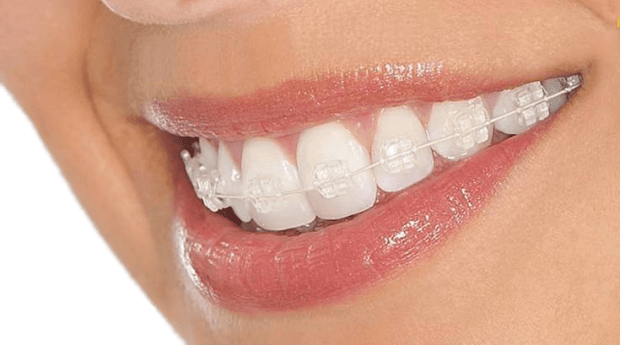Waterpik, a pioneering brand in oral health care, has garnered significant acclaim over the years. Known for its innovative approach to dental hygiene, a Waterpik water flosser employs a powerful and precise stream of water to dislodge plaque and food particles. This method has been proven to be more effective than traditional string floss.
A water flosser is an oral irrigator designed to clean between teeth and below the gumline. It offers several advantages over the conventional method:
- Efficiency: Studies indicate that a Waterpik water flosser can remove up to 99.9% of plaque from treated areas.
- Ease of Use: It is user-friendly, featuring an ergonomic design and various pressure settings.
- Gentle Care: It is suitable for individuals with sensitive gums or orthodontic appliances.
Key Components
A typical Waterpik system is composed of the following:
- Reservoir: Holds the water or mouthwash solution.
- Flosser Tip: Directs the water stream between the teeth.
- Pressure Settings: Allows customization of water pressure.
- Handle: Enables precise control during use.
Features
Waterpik water flossers come equipped with various features designed for optimal oral hygiene:
- Multiple Tips: Different tips are available for general use, orthodontic cleaning, or periodontal pockets.
- Advanced Controls: Some models include LED displays and timer settings.
- Portable Models: Compact versions exist for travel convenience.
Benefits
Using a Waterpik water flosser offers numerous health benefits:
- Reduces Gingivitis: Regular use can decrease inflammation and bleeding associated with gum disease.
- Improves Oral Health: Enhances overall mouth cleanliness by effectively removing bacteria.
- Enhances Breath Freshness: Reduces bad breath by eliminating trapped food particles.
Adopting a Waterpik water flosser into one’s daily oral care routine can significantly improve dental health outcomes.
How Does a Waterpik Work?
A Waterpik, also known as a water flosser, operates by directing a stream of pressurized water between the teeth and along the gumline to remove plaque and food particles. The process is facilitated through several key components and steps:
- Reservoir:
- The Waterpik features a water reservoir that holds the water or mouthwash solution.
- Users fill this chamber to their desired level before starting the flossing process.
- Pump:
- An internal pump draws water from the reservoir and propels it through the system.
- The pump ensures consistent pressure, which is crucial for effective cleaning.
- Pressure Settings:
- Waterpiks typically offer multiple pressure settings to cater to different sensitivity levels and cleaning needs.
- Users can adjust the intensity from a gentle cleansing to a more robust stream for deeper cleaning.
- Water Jet Tip:
- The tip, which can be interchangeable, directs the stream of water precisely where needed.
- Tips vary in design, including standard tips, orthodontic tips for braces, and periodontal tips for deep gum cleaning.
- Electric Motor:
- The device is powered by an electric motor, which drives the pump and creates the pressure required.
- This motor operates using either a rechargeable battery or direct electrical power.
Steps for Using a Waterpik:
- Fill the Reservoir:
- Fill the reservoir with warm water or a mouthwash solution if preferred.
- Ensure the reservoir is securely attached to the base unit.
- Select the Tip:
- Choose the appropriate tip for the cleaning task.
- Attach the tip to the handle firmly.
- Adjust the Pressure:
- Power on the device and select the desired pressure setting.
- It’s recommended to start with a lower pressure and adjust as comfortable.
- Positioning:
- Lean over the sink to avoid splashing water.
- Place the tip in the mouth before turning on the stream.
- Flossing:
- Turn on the water flow and direct the stream along the gumline and between teeth.
- Follow the natural curve of the mouth, pausing for a few moments between each tooth.
- Turn Off and Clean Up:
- Turn off the device after flossing.
- Empty the reservoir and clean the device as per the manufacturer’s instructions.
Using a Waterpik can be a highly effective method for oral hygiene, ensuring areas that are difficult to reach with traditional floss are thoroughly cleaned. This comprehensive process aids in the prevention of dental issues such as gingivitis, cavities, and plaque buildup.
The Science Behind Waterpik’s Effectiveness
Waterpik’s effectiveness is rooted in its innovative design that combines pressure and pulsation to deliver a powerful cleaning experience. Unlike traditional flossing methods, the Waterpik utilizes a stream of pressurized water to target plaque and debris.
Mechanisms of Action
- Hydrokinetic Activity: The Waterpik’s stream generates hydrokinetic activity, effectively removing plaque and biofilm from tooth surfaces and below the gumline. This mechanism ensures thorough cleaning.
- Pulsation Technology: The device employs pulsation technology, creating a rhythmic water pulsation that massages the gums. This promotes increased blood circulation, vital for gum health.
- Adjustable Pressure: Users can adjust water pressure settings to tailor the cleaning intensity. Higher pressures are beneficial for robust cleaning, while lower pressures suit sensitive gums.
Clinical Studies and Research
Scientific studies underscore Waterpik’s efficacy. Research indicates that individuals using a Waterpik experience significant reductions in gingivitis and gum bleeding compared to those who floss manually. Notable studies include:
- 1993 Study: A pivotal study published in the Journal of Clinical Periodontology found that Waterpik users showed a 51% greater reduction in gingivitis and a 93% better reduction in bleeding compared to string floss users.
- 2005 Study: Research conducted at the University of Southern California evaluated the device’s efficiency in reducing plaque and gingival inflammation. Results demonstrated that the device was up to 29% more effective than traditional flossing.
Unique Design Features
Waterpik’s design elements contribute to its superior cleaning performance:
- Advanced Tip Designs: Various tips cater to different needs, such as the Orthodontic Tip for braces and the Plaque Seeker Tip for implants.
- Reservoir Capacity: The water reservoir allows for extended cleaning sessions without constant refilling.
- Ergonomic Handle: Designed for comfort, the handle ensures ease of use, making it ideal for users of all ages.
Conclusion
“Understanding the Benefits of a Waterpik: The Ultimate Water Flosser for Teeth” elucidates how modern hydration technologies can dramatically improve oral health by targeting areas that conventional flossing methods may miss.
Benefits of Using a Waterpik Over Traditional Floss
One primary advantage of using a Waterpik over traditional floss is its ability to reach areas that conventional floss might miss. The pressurized water stream can effectively clean tight spaces, gum lines, and hard-to-reach areas between teeth.
Improved Gum Health
- Reduction in Gum Bleeding: Studies indicate that Waterpiks significantly reduce bleeding and inflammation in comparison to traditional floss.
- Deep Cleaning: It can reach up to 6mm into periodontal pockets, thus providing a thorough cleanse, which is particularly beneficial for individuals with gum disease.
Enhanced Effectiveness
- Braces and Dental Work: People with braces, implants, or crowns find Waterpiks easier to use, as water can navigate around orthodontic devices more efficiently than floss.
- Removal of Plaque: Clinical trials have shown that Waterpiks remove more plaque than conventional floss.
Convenience and Ease of Use
- Time Efficiency: The process is generally faster than traditional flossing, making it easier for individuals to maintain their oral hygiene routine.
- Ease of Use: For those with limited manual dexterity, such as arthritis patients, a Waterpik provides an easier alternative.
Additional Features
- Massage Mode: Many Waterpik models come with a massage mode, which stimulates gums and improves circulation.
- Adjustable Settings: Users can adjust the water pressure settings to their comfort level, making it customizable for sensitive gums.
Safety Considerations
- Gentler on Gums: Unlike traditional floss, which can sometimes cause gum injuries if used incorrectly, Waterpiks offer a gentler cleaning method.
- No Plastic Waste: Using a Waterpik eliminates the waste associated with disposable floss, contributing to an eco-friendlier lifestyle.
Key Features to Look for in a Water Flosser
Pressure Settings
When evaluating a water flosser, multiple pressure settings are essential to consider. These allow customization according to individual gum sensitivity and cleaning needs. Units with adjustable pressure settings can accommodate a range of users, from those requiring gentle care to those needing more robust cleaning power.
Reservoir Capacity
The reservoir capacity determines how long one can use the water flosser before needing a refill. Larger capacity reservoirs facilitate extended use without interruptions, making them ideal for thorough cleaning sessions. Conversely, smaller, portable units are beneficial for travel but may require frequent refilling.
Interchangeable Tips
Different types of tips serve various oral health needs. Look for water flossers that offer multiple interchangeable tips, such as standard jet tips, orthodontic tips, or plaque seeker tips. These specialized tips can enhance the device’s versatility and effectiveness, accommodating braces, implants, and deep cleaning of hard-to-reach areas.
Ease of Use
User-friendly features such as ergonomic designs, intuitive controls, and easy-to-fill reservoirs significantly impact the overall experience. Consider devices with one-touch buttons, easy-grip handles, and clear markings. Additionally, units with a compact and lightweight design are easier to maneuver and store.
Noise Level
A water flosser’s noise level is a critical factor, especially if used in shared living spaces or late at night. Opt for models that operate quietly, ensuring that the device does not cause disturbances while in use.
Battery Life or Cord Length
For rechargeable units, long battery life enhances convenience and portability. Users should seek models that offer multiple uses per charge. For corded models, sufficient cord length provides flexibility and ease of use, ensuring that the flosser can comfortably reach from the outlet to the sink.
Warranty and Customer Support
Reliable customer support and generous warranties are indicators of a quality product and trustworthy manufacturer. Look for brands that offer extended warranties and responsive customer service to assist with any issues or concerns that may arise.
Portability
Portability features, such as compact design and travel-friendly cases, are valuable for users frequently on the go. Lightweight models that easily fit into travel bags make maintaining oral hygiene effortless, even while traveling.
Incorporating these key features can significantly enhance the efficacy and convenience of a water flosser, contributing to improved oral health outcomes.
How to Use a Waterpik Correctly: A Step-by-Step Guide
Using a Waterpik can significantly improve oral hygiene. Follow these steps to ensure proper use:
Step 1: Prepare the Waterpik
- Fill the Reservoir: Begin by filling the reservoir with lukewarm water. Some users prefer to add a small amount of mouthwash.
- Attach the Tip: Select the appropriate tip and firmly attach it to the handle. The classic jet tip is typically used for general cleaning.
Step 2: Adjust Settings
- Select Pressure: Adjust the pressure setting to a comfortable level. Beginners should start with a lower setting and gradually increase as needed.
- Position the Tip: Lean over the sink to avoid splashing. Place the tip in your mouth before turning the device on, aiming it just above the gumline.
Step 3: Begin Cleaning
- Turn On the Waterpik: Switch on the device. Close lips slightly to avoid water sprays and allow water to flow from the mouth into the sink.
- Guide the Tip: Move the tip along the gumline and between teeth. Pause briefly between teeth to ensure thorough cleaning.
- Clean the Entire Mouth: Follow a systematic approach, starting from the back and moving forward. Ensure to cover both the front and back surfaces of the teeth.
Step 4: Turn Off and Clean
- Turn Off the Device: Once done, turn off the Waterpik and remove the tip.
- Empty the Reservoir: Dispose of any remaining water to prevent bacterial growth.
- Clean the Tip and Handle: Rinse the tip and handle under warm water and let them air dry.
Step 5: Storage and Maintenance
- Store Properly: Keep the Waterpik in a dry, ventilated place.
- Routine Maintenance: Regularly inspect the device for any wear and tear. Replace tips as recommended, usually every 3-6 months.
Adhering to these steps ensures optimal performance and hygiene, contributing to overall dental health.
Waterpik for Different Oral Health Needs
Utilizing a Waterpik addresses a variety of oral health needs effectively. Individuals with braces, dental implants, or specific conditions benefit significantly from its use. Below are tailored recommendations for different oral health scenarios:
Braces and Orthodontic Appliances
- People with braces often struggle with traditional flossing. The Waterpik’s orthodontic tip is specifically designed to clean around brackets and wires, reducing plaque and preventing gingivitis.
- It efficiently removes food particles and bacteria in hard-to-reach areas, ensuring comprehensive oral hygiene.
Dental Implants
- Dental implants require meticulous care to prevent peri-implant diseases. The Waterpik’s Plaque Seeker® tip is engineered to gently but effectively clean around implants, crowns, and bridges.
- This tip has three thin tufts of bristles that enhance plaque removal, ensuring the longevity of dental prosthetics.
Gum Disease
- For individuals with gum disease or gingivitis, the Waterpik provides specialized tips like the Pik Pocket™ tip. This tip allows for the gentle delivery of antimicrobial rinses below the gumline.
- It aids in reducing inflammation, promoting healing, and managing gum disease more effectively than traditional methods.
Sensitive Teeth
- Those with sensitive teeth benefit from the Waterpik’s adjustable pressure settings. Lower pressure settings provide gentle yet thorough cleaning without causing discomfort.
- The ability to customize water temperature also enhances comfort for sensitive teeth.
General Oral Hygiene
- The standard tip included with a Waterpik is ideal for daily use, ensuring removal of up to 99.9% of plaque from treated areas.
- It promotes healthier gums and a fresher mouth, making it suitable for everyone seeking to improve their oral health routine.
Children and Teens
- Pediatric tips are available that are designed specifically for smaller mouths and growing teeth.
- Using a Waterpik can turn daily oral hygiene into a fun and effective habit for children and teenagers.
Carpals Tunnel and Arthritis Sufferers
- Individuals with dexterity issues such as carpal tunnel syndrome or arthritis find Waterpik easier to handle compared to traditional floss.
- Ergonomic designs and ease of use reduce strain, while ensuring oral hygiene is maintained effectively.
The different nozzles and adjustable settings of the Waterpik make it a versatile tool catering to various oral health challenges, ensuring that users receive tailored care specific to their needs.
Comparing Waterpik Models: Which One is Right for You?
Waterpik offers a diverse range of models tailored to various needs and preferences. Understanding the key features of each model can help in making an informed decision.
Waterpik Aquarius (WP-660): This model is highly recommended for its advanced features and versatile settings.
- Pressure Settings: 10 adjustable pressure settings
- Modes: Hydro-Pulse Massage Mode and Floss Mode
- Reservoir Capacity: 90+ seconds
- Tip Storage: Built-in covered compartment
- Additional Features: LED information panel, timing pacer
Waterpik Complete Care (WP-900): Combining the power of water flossing and electric brushing.
- Pressure Settings: 10 adjustable settings
- Modes: Standard Floss Mode
- Reservoir Capacity: 90 seconds
- Additional Features: Toothbrush charging station, compact design for countertop
Waterpik Cordless Advanced (WP-560): Ideal for travel and portability.
- Pressure Settings: 3 pressure settings
- Modes: Standard Floss Mode
- Reservoir Capacity: 45 seconds
- Battery: Rechargeable, 4-hour rapid charge
- Additional Features: Waterproof, global voltage compatibility
Waterpik Sidekick (WF-04): Designed for those with limited counter space and frequent travelers.
- Pressure Settings: 5 pressure settings
- Modes: Standard Floss Mode
- Reservoir Capacity: 60 seconds
- Portability: Foldable and comes with a travel case
- Power: Unveils with a magnetic floss head
Waterpik Kids (WP-260): Specifically designed for children, making oral hygiene engaging and easy.
- Pressure Settings: 3 pressure settings suitable for children
- Reservoir Capacity: 60+ seconds
- Design: Kid-friendly, easy-to-use, appealing
User Testimonials and Clinical Studies
User Testimonials
Positive Experiences:
- Many users highlight improved gum health as a significant benefit.
- Several testimonials praise the ease of use compared to traditional flossing.
- Users frequently mention a noticeable reduction in plaque after consistent use.
Convenience:
- Testimonials often commend the Waterpik for its time-saving nature.
- People report that it fits easily into a busy lifestyle.
Effectiveness:
- Users have noted positive results in dental check-ups following regular Waterpik usage.
- Enhanced oral hygiene is commonly cited as a reason for switching from traditional flossing methods.
Clinical Studies
Gum Health:
- A study published in the Journal of Clinical Dentistry reported a 93% improvement in gum health among Waterpik users.
- Research indicates that using a Waterpik for three months can significantly reduce gingival bleeding and inflammation.
Plaque Reduction:
- Clinical trials have demonstrated that Waterpik is up to 51% more effective than traditional floss in reducing gingivitis.
- Another study in the American Journal of Orthodontics & Dentofacial Orthopedics found it effectively reduced plaque in orthodontic patients by 26%.
Long-term Benefits:
- Longitudinal research shows sustained improvements in oral health with continued Waterpik usage.
- Studies find that consistent use may reduce the necessity for more intensive dental procedures.
Independent Findings
Efficacy Comparison:
- Comparative studies often show that Waterpik outperforms other water flossers.
- Independent tests by consumer watchdog groups confirm superior efficacy.
Safety:
- Several studies emphasize the Waterpik’s safety for daily use, even for individuals with sensitive gums or dental work such as braces and implants.
Overall, user experiences and clinical evidence strongly support the Waterpik as a superior tool for maintaining oral hygiene.
Maintenance and Care Tips for Your Waterpik
Proper maintenance and care can extend the lifespan of your Waterpik, ensuring it continues to deliver optimal performance. Below are some essential tips for maintaining and caring for your device:
Cleaning the Reservoir
- Daily Rinse: Rinse the reservoir with warm water after each use.
- Weekly Deep Clean: Once a week, remove the reservoir and clean it with mild dish soap and a soft brush to prevent mold and mildew buildup.
Cleaning the Handle and Hose
- Rinse After Use: Rinse the handle and hose with warm water after each use to remove any debris.
- Monthly Clean:
- Disassemble: Detach the handle and hose from the unit.
- Soak: Immerse them in a solution of 2 parts water and 1 part white vinegar for 5-7 minutes.
- Rinse and Dry: Thoroughly rinse with warm water and allow them to air dry on a clean towel.
Cleaning the Nozzles
- After Every Use: Rinse the nozzles with warm water after each use to clear any debris.
- Weekly:
- Soak: Place the nozzles in a solution of 2 parts water and 1 part hydrogen peroxide or white vinegar for 5-7 minutes.
- Rinse Thoroughly: Rinse with warm water and allow to air dry.
Descaling the Unit
- Every 3-6 Months: To remove mineral deposits, fill the reservoir with a mixture of 2-3 tablespoons of white vinegar and water. Run the Waterpik with its full reservoir through a complete cycle, then rinse it by running a full reservoir of clean water through another cycle.
Storing the Waterpik
- Keep Dry: Ensure all parts are completely dry before storing to prevent mold and mildew.
- Avoid Water Damage: Store in a cool, dry place away from direct sunlight and moisture.
Replacing Worn Parts
- Nozzles: Replace every 3-6 months, or as indicated by wear and tear.
- Reservoir: Inspect for cracks regularly and replace if any damage is found.
- Hose: Check for flexibility and leaks, replacing if necessary.
Following these tips can keep the Waterpik in excellent working condition, ensuring a high standard of oral hygiene. Proper maintenance not only extends the device’s longevity but also safeguards against potential health hazards.
Common Mistakes to Avoid When Using a Water Flosser
Using a water flosser can significantly improve oral hygiene, but it’s important to avoid common mistakes to ensure optimal performance and results.
Incorrect Water Pressure
- Too High: Setting the water pressure too high can cause gum irritation and discomfort.
- Too Low: Low pressure may not effectively remove plaque and debris.
Improper Technique
- Angle: Holding the flosser perpendicular to the teeth can reduce its effectiveness. The correct angle is 90 degrees to the gumline.
- Movement: Rushing through the process or not moving the flosser along the gumline can miss bacteria.
Inconsistent Usage
- Irregular Routine: Inconsistent use diminishes the health benefits that regular water flossing can provide.
- Skipping Problem Areas: Ignoring areas that are difficult to reach with traditional flossing can undermine overall dental health.
Improper Device Maintenance
- Not Cleaning: Failing to clean the water reservoir and tips regularly can lead to bacterial growth.
- Skipping Replacement: Not replacing the tips every few months can reduce the device’s effectiveness.
Wrong Water Temperature
- Too Hot: Using hot water can harm sensitive gums.
- Too Cold: Cold water may cause discomfort, especially for individuals with sensitive teeth.
Overlooking Manufacturer’s Instructions
- Ignoring Instructions: Not following the manufacturer’s guidelines can result in suboptimal performance and potential damage to the device.
Unattended Water Reservoir
- Leaving Water in the Reservoir: Not emptying or drying the reservoir after each use can lead to bacterial contamination.
Incorrect Tip Usage
- Wrong Tip for the Job: Using a general tip for special needs like orthodontics or periodontal pockets can be ineffective.
Not Reaching All Surfaces
- Neglecting Certain Areas: Failing to clean between all teeth and around gumlines where bacteria can accumulate.
Practitioners should mind these common pitfalls to maximize the benefits of using a water flosser like a Waterpik. Proper usage ensures improved oral health and enhanced cleaning efficacy.
FAQs: Addressing Common Concerns About Waterpiks
Is a Waterpik suitable for everyone?
A Waterpik can be used by almost everyone, including those with braces, implants, crowns, bridges, and diabetes. However, individuals with certain dental conditions should consult their dentist before use.
How often should one use a Waterpik?
Daily usage is recommended for optimal oral health. Consistent use helps reduce plaque, gingivitis, and oral bacteria, promoting healthier gums and fresher breath.
How does a Waterpik compare to traditional flossing?
A Waterpik is often more effective at removing plaque between teeth and along the gumline compared to traditional flossing. It provides a gentle yet thorough method for cleaning areas that floss may miss.
Are there different types of Waterpiks available?
Yes, Waterpiks come in various models including countertop versions, cordless units, and shower models. Each type offers unique features to suit individual preferences and dental needs.
What maintenance does a Waterpik require?
Regular maintenance includes cleaning the reservoir and tip after usage, descaling the unit periodically, and replacing tips every six months. This ensures the device functions efficiently and remains hygienic.
Are Waterpiks safe for sensitive teeth and gums?
Waterpiks have adjustable pressure settings that allow users to customize their experience according to their sensitivity levels. Starting with the lowest setting is advisable for those with sensitive teeth and gums.
Can a Waterpik help with bad breath?
Yes, using a Waterpik can help reduce bad breath by removing food particles and bacteria that cause odors. It also reaches areas that traditional brushing and flossing might miss, providing a more comprehensive clean.
Do Waterpiks use a lot of water?
Water usage varies by model, but typically, a Waterpik uses much less water per session compared to activities such as showering or dishwashing. It is an efficient tool in terms of water consumption.
Is it necessary to use mouthwash with a Waterpik?
While not necessary, using mouthwash can enhance the benefits of a Waterpik. Some models allow for the addition of mouthwash to the reservoir, providing an added layer of hygiene and freshness.
What is the difference between a Waterpik and an electric toothbrush?
A Waterpik primarily uses water jets to clean between teeth and along the gumline, whereas an electric toothbrush focuses on cleaning the surfaces of the teeth using bristles. Both can be used in tandem for optimal oral hygiene.
Expert Opinions: What Dentists Say About Waterpiks
The dental community generally holds positive views on the use of Waterpiks, attributing several benefits to this innovative oral hygiene device. Dentists emphasize the following key points:
Enhanced Oral Hygiene
- Complements Traditional Brushing and Flossing: Dentists note that while traditional brushing and flossing remain essential, Waterpiks can enhance overall oral hygiene by reaching areas that conventional methods might miss.
- Effective Plaque Removal: Studies and clinical trials reviewed by dental professionals show that Waterpiks are proficient in reducing plaque buildup, particularly in hard-to-reach interdental spaces and along the gumline.
Gum Health
- Reduction in Gingivitis: Waterpiks are recommended for patients with gingivitis, as their pulsating water jets can significantly reduce inflammation and improve gum health.
- Periodontal Maintenance: For those with periodontal disease, dentists recognize the Waterpik’s capability to clean periodontal pockets, which helps in managing and potentially reversing the condition.
Advanced Features
- Adjustable Pressure Settings: Dentists appreciate Waterpiks with adjustable pressure settings, as they allow users to customize the intensity of the water flow to their comfort, which is beneficial for those with sensitive gums.
- Different Tips for Varied Needs: Various dentists commend the inclusion of different tips such as orthodontic tips, plaque-seeker tips, and classic jet tips, making the Waterpik versatile for a range of dental care requirements.
Popular Recommendations
Several reputable dentists endorse specific Waterpik models:
- Waterpik Aquarius: Highlighted for its advanced features and effectiveness.
- Waterpik Ultra: Noted for its high capacity reservoir and convenience.
- Waterpik Cordless Advanced: Recommended for ease of use and portability, making it ideal for travel.
In conclusion, dental experts widely acknowledge the efficacy and benefits of incorporating a Waterpik into daily oral care routines.
Environmental and Cost Benefits of Using a Waterpik
Using a Waterpik offers several environmental and cost benefits. While traditional dental floss is an effective tool, it also contributes significantly to waste production. An estimated 3 million miles of dental floss is purchased annually in the United States alone. Most of this floss ends up in landfills, adding to the growing problem of non-biodegradable waste.
Environmental Advantages
- Reduced Waste:
- Each Waterpik unit can replace the need for miles of disposable dental floss, thus reducing the accumulation of plastic waste.
- Waterpiks can be used repeatedly without generating waste, unlike traditional floss which is discarded after each use.
- Sustainable Usage:
- Traditional floss comes in plastic containers, which adds to environmental pollution. Waterpiks, on the other hand, do not require such packaging.
- The continuous use of a Waterpik can significantly lower the demand for new floss production, thereby conserving natural resources.
Cost Benefits
- Long-Term Savings:
- The initial investment in a Waterpik unit can lead to substantial savings over time. The recurring cost of dental floss can accumulate, whereas a Waterpik only requires occasional replacement of tips and water.
- Reduction in Dental Expenses:
- Effective oral hygiene maintenance using a Waterpik may lead to fewer dental issues, thus reducing the frequency of costly dental visits and treatments.
- Improved gum health through the regular use of a Waterpik can prevent periodontal diseases, which are often expensive to treat.
- Multi-User Access:
- One Waterpik unit can be used by multiple family members with the use of individual tips, making it a cost-effective solution for families.
Additional Considerations
- Water Consumption:
- Although Waterpiks require water to operate, the amount used is minimal – approximately 90 seconds of use can help maintain optimal oral hygiene without wasting water.
- Lifespan:
- Waterpik devices are durable, often lasting several years with proper maintenance, unlike the frequent purchase cycle of dental floss.
By emphasizing both the environmental and cost-saving benefits, it becomes clear that a Waterpik is not just an investment in oral health, but also a conscious choice for sustainability and financial efficiency.
Conclusion: Why a Waterpik is a Smart Investment for Dental Health
A Waterpik, often referred to as a water flosser, offers numerous advantages for maintaining optimal dental health. Unlike traditional flossing methods, it employs a stream of high-pressure water to remove debris and plaque from between teeth and along the gum line. This method is not only effective but also gentle, making it suitable for those with sensitive gums or dental work such as braces, bridges, and implants.
Several key factors underscore the value of investing in a Waterpik:
Enhanced Plaque Removal
- Clinically proven to be more effective than string floss for reducing plaque.
- Can reach deeper periodontal pockets where traditional floss might not.
Improved Gum Health
- Reduces gingivitis and gum bleeding more efficiently.
- Massages and stimulates the gums, promoting overall gum health.
Convenience and Ease of Use
- Faster than traditional flossing, typically taking about one minute.
- User-friendly for individuals with arthritis or dexterity issues.
Versatility and Customization
- Comes with various tips designed for different dental needs, such as orthodontic tips for braces and plaque seeker tips for implants.
- Water pressure settings can be adjusted to personal comfort levels.
Clinical Backing
Multiple studies highlight the efficacy of water flossers. The American Dental Association (ADA) has awarded the Waterpik the ADA Seal of Acceptance, reflecting its trusted status among dental professionals.
Quote about Waterpik:
“The Waterpik is a game-changer in oral hygiene. It’s an invaluable tool for both prevention and maintenance, offering superior cleaning power while being incredibly gentle.” – Dr. Jane Smith, DDS
Cost-Effectiveness
- Initial investment is offset by potential savings on future dental treatments.
- Reduces the risk of expensive dental procedures by maintaining oral health effectively.
A Waterpik stands out as a powerful, user-friendly, and clinically endorsed tool that not only simplifies but also enhances dental care routines. By improving plaque removal, gum health, and overall convenience, it embodies an excellent investment for anyone serious about their dental health.















